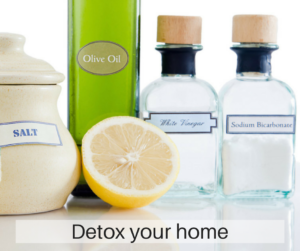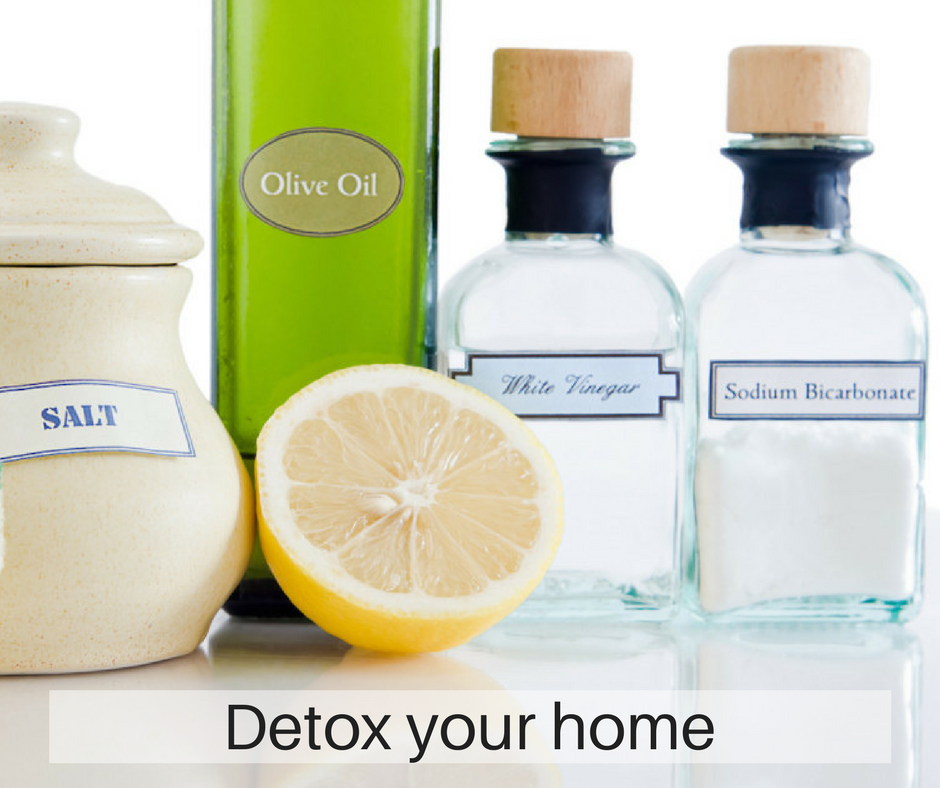by Shadi Nahas
 Lurking. That is the probably the best way to describe the hidden toxins that live in our households. It is a pretty safe bet that if it toxin chemicals are in our environment, they are probably in our bloodstream as well. A recent study by Environmental Defence has shown that Canadian kids as young as 10 and adults as old as 75, had toxic chemicals polluting their bodies, no matter what city they lived in. Proving that it is not only the air we breathe outside the home that can pollute us, but inside the home as well.
Lurking. That is the probably the best way to describe the hidden toxins that live in our households. It is a pretty safe bet that if it toxin chemicals are in our environment, they are probably in our bloodstream as well. A recent study by Environmental Defence has shown that Canadian kids as young as 10 and adults as old as 75, had toxic chemicals polluting their bodies, no matter what city they lived in. Proving that it is not only the air we breathe outside the home that can pollute us, but inside the home as well.
Now that you have tackled the cleaning products in your home, the next step is to look for the items that are inconspicuously sitting in your home and slowly oozing toxins. Objects like your furniture, carpets, non-stick cookware and certain plastic food storage containers, to name only a few, should be checked for their safety. Studies have suggested that perfluorinated chemicals commonly used as a stain repellent in furniture, carpets and clothing and in non-stick cookware may be cancer-causing and may disrupt normal hormone function. BFRs (brominated flame retardants) used to slow the spread of fire in upholstered furniture, mattresses, curtains, carpets and electronics and some children’s clothing contain PBDEs (polybrominated diphenyl ethers) which are suspected hormone disruptors, carcinogens and may have particularly damaging effects on the thyroid. PBDEs leach from products, and have been detected in house dust, human blood and breast milk. And of course, we cannot forget the chemical that has been in the news headlines much of this past year – Bisphenol A. Bisphenol A is a known hormone disruptor with estrogen-like activity that may affect reproductive health and can cause reproductive damage and birth defects that may lead to prostate and breast cancer in adulthood. The major hiding place of this chemical is #7 polycarbonate food and beverage containers, some baby bottles, and plastic food wrap.
The health problems the household chemicals are causing could be talked about at length, but instead let’s focus on what we can do about them and where to find the tools we need to help guide is making our homes toxin-free. The purpose here is not to be living in fear and afraid to be in our homes, but to learn what is around us and to be aware about the choices we are making everyday.
The first course of action is to identify potential toxic chemicals and cleaning products in your home and find out if they are safe to use. The next step is to find alternatives to the unsafe ones, and yes, there are alternatives. If you can get rid of potentially harmful chemicals and replace them with safer items, do it. You and your family will be better for it, and by not buying harmful chemicals you will instantly become part of a movement of consumers that will help pressure manufacturers of toxic products to innovate and produce safer alternatives.
The most obvious place to look for toxins in your home is conventional household cleaning products. Unfortunately, Canada does not have any laws that forces manufacturers of cleaning products to list ingredients on their labels, so a good rule of thumb is that if the product has a pretty scary label telling you to call poison control in case of ingestion or skin contact, it is probably not your safest choice! Many companies using less-toxic ingredients are eager to make their ingredients known, and provide this information on labels or on information sheets or posters in stores. Although the task of going through all of your products and finding alternatives for them may seem daunting at first, you will realize that it is only clever marketing that has made us believe that we for every chore there is a super-specialized “must have” cleaning product. The most common and dangerous offenders under the sink are ammonia, formaldehyde, hydrochloric acid, phenol and sodium hypochlorite (also know as bleach).
So what are some of the alternatives? It’s simple, go back to using what most of our grandmothers used. For example, a very effective all purpose cleaner can be made by dissolving four tablespoons of baking soda in four cups of warm water. Pour it into a spray bottle and you are done. No ammonia, no bleach, no synthetic fragrances, no carcinogens, reproductive toxins or irritants. Surprisingly, a common salad dressing ingredient serves double-duty as a powerful antibacterial grease and grime-fighting cleaner. Yes, vinegar. Mix equal parts of vinegar and water in a spray to make yourself a glass and window cleaner, or use it full strength to sponge down your bathtub and then scour using baking soda. The same can be done for your toilet bowl. Kids helping you decorate putting stickers on your furniture and walls? Moisten with vinegar, let sit for ten minutes, and then remove.
These examples are by no means exhaustive and many more alternatives exist. If you are not yet ready to make your own cleaners, there are a handful of companies that are now making non-toxic products that can do the job well and are increasingly available in most grocery stores.
One other perk to mention besides the health benefit of using safer cleaning products is that kids can safely get in on the cleaning without you being concerned that they will be ingesting harmful chemicals.
While you are not expected to rip out your carpets, get rid of your furniture and scrub your entire home with non-toxic products overnight, everyone can at least start somewhere. Thankfully, to help you in your quest in detoxing your home, there are a handful of reputable websites you can use. An excellent resource to help you is www.lesstoxicguide.ca. This site has a myriad of information pertaining to potential health risks of commonly used products, can help you identify less toxic alternatives for personal care, household cleaning and household pest control and provides information that can help you evaluate products in order to choose the safest ones. Another fantastic website is www.toxicnation.ca. Here you can tap into the latest in political achievements made by environmental lobbyists and an policy makers and has a great interactive link that virtually walks you through different rooms in a home and identifies what toxic substances you should be looking out for, and the alternatives. It also has information on how you can get tested for chemicals and pollutants.
We may not be able to stop global warming overnight, but we can clean up our own house. Take a step. Detox your home, detox your body.

